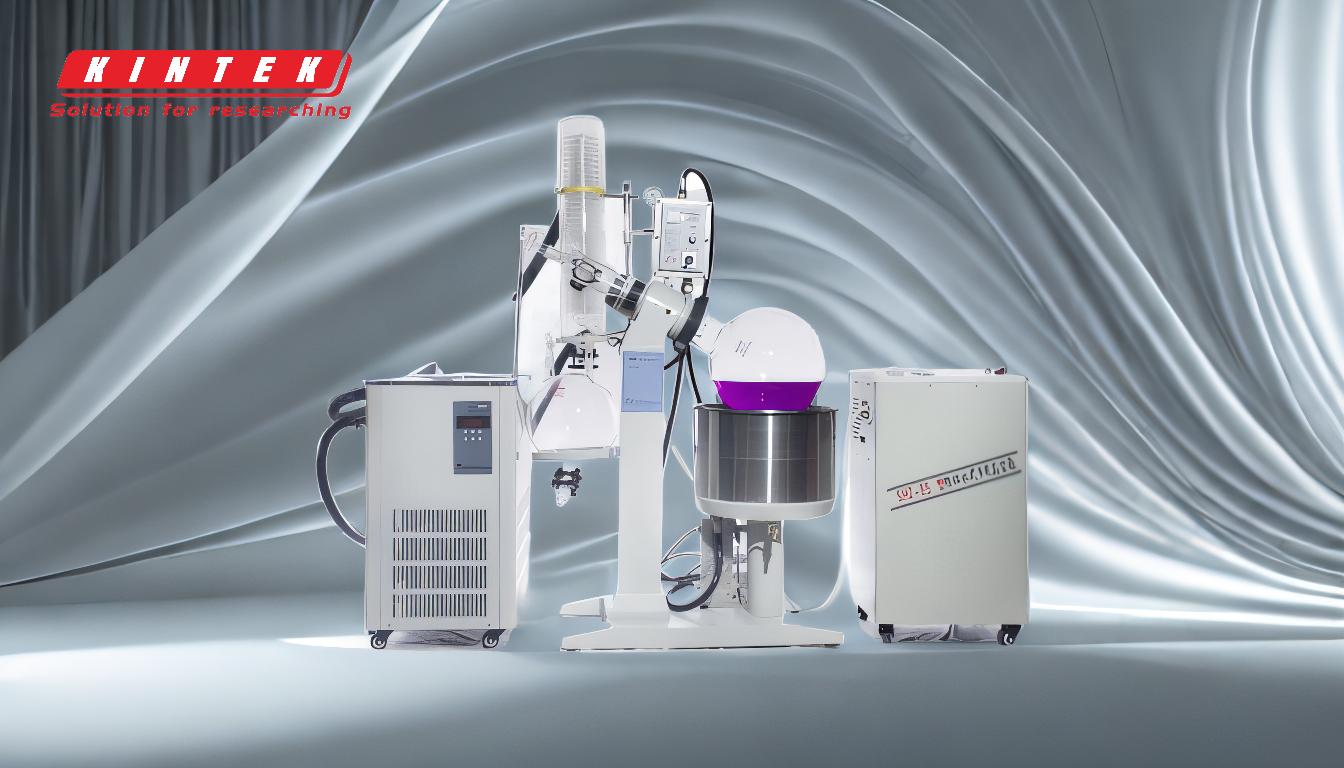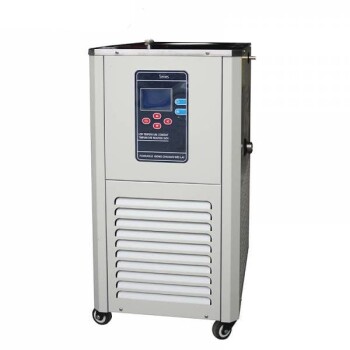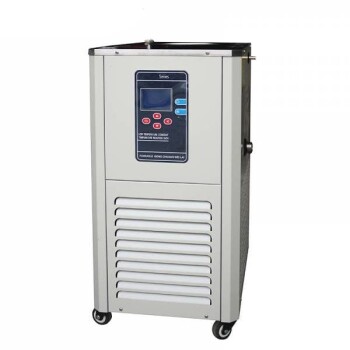A chiller is an essential component in a rotary evaporator setup, primarily used to provide precise and stable cooling during the evaporation process. It ensures that the solvent is properly vaporized and condensed by maintaining a consistent temperature in the condenser. The chiller pumps cool fluid, such as water or a water/glycol mixture, to remove heat generated during evaporation, allowing the solvent to condense efficiently. This process not only improves the efficiency of the rotary evaporator but also conserves water and eliminates the variability caused by using tap water, making it an environmentally friendly and reliable cooling solution.
Key Points Explained:

-
Purpose of a Chiller in Rotary Evaporation:
- A chiller is used to provide sufficient cooling at precise temperatures during the evaporation process in a rotary evaporator. This is crucial because the solvent becomes warm during evaporation, and cooling is necessary to ensure proper vaporization and condensation.
-
Cooling Mechanism:
- The chiller pumps cool fluid (typically water or a water/glycol mixture) to the condenser of the rotary evaporator. This fluid absorbs the heat generated during the evaporation process, allowing the solvent vapor to condense back into a liquid form. The warm fluid then returns to the chiller to be cooled again, creating a continuous cooling cycle.
-
Temperature Stability:
- One of the key benefits of using a chiller is its ability to maintain a consistent and stable temperature in the condenser. This stability is essential for efficient condensation and prevents fluctuations that can occur when using tap water, which can vary in temperature depending on the season or environmental conditions.
-
Environmental and Operational Efficiency:
- Using a chiller is more environmentally friendly compared to using tap water for cooling. It conserves water by recirculating the cooling fluid and eliminates the need for continuous water flow. Additionally, it provides a more efficient and reliable cooling solution, ensuring optimal performance of the rotary evaporator.
-
Role in Solvent Condensation:
- The chiller is responsible for cooling the evaporated solvent, which is then transferred to the collection flask. By providing a recirculating supply of chilled liquid to the condenser, the chiller ensures that the condenser always has chilled liquid ready to condense the evaporated solvent, maintaining the efficiency of the evaporation process.
-
Importance in Rotary Evaporator Setup:
- In many rotary evaporator setups, the chiller is a critical component as it directly impacts the efficiency and effectiveness of the evaporation and condensation processes. Without a chiller, the process would be less efficient, and the quality of the condensed solvent could be compromised due to inconsistent cooling.
By understanding these key points, it becomes clear that the chiller plays a vital role in the operation of a rotary evaporator, ensuring precise temperature control, efficient solvent condensation, and overall process stability.
Summary Table:
| Key Aspect | Description |
|---|---|
| Purpose | Provides precise cooling for solvent vaporization and condensation. |
| Cooling Mechanism | Pumps cool fluid (water/glycol mix) to absorb heat and condense solvent vapor. |
| Temperature Stability | Maintains consistent cooling, avoiding fluctuations from tap water. |
| Environmental Efficiency | Conserves water and reduces environmental impact by recirculating cooling fluid. |
| Solvent Condensation | Ensures efficient condensation of evaporated solvent for collection. |
| Overall Importance | Critical for efficient evaporation, condensation, and process stability. |
Optimize your rotary evaporator setup with a reliable chiller—contact us today to learn more!












